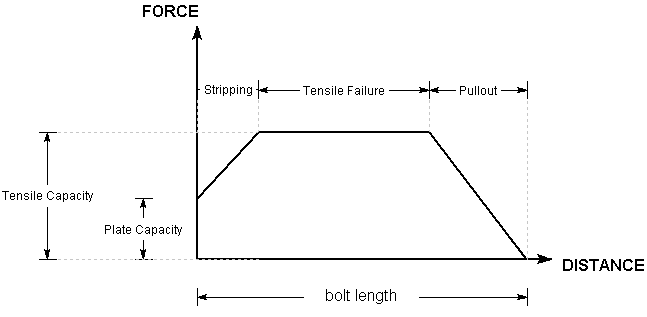Split Set / Swellex
Split Set and Swellex bolt types allow you to model a fully bonded frictional bolt type.

Split Set and Swellex are presented as two different bolt types in UnWedge, for modelling convenience. However, the two bolt types are implemented in exactly the same way in the UnWedge analysis. The only difference between the two selections is that the default Bond Strength is higher for Swellex than for Split Set. This value can of course be changed by the user.
Furthermore, the implementation of the Swellex / Split Set models in UnWedge is essentially the same as the Grouted Dowel model, with the condition that the Bonded Length for a Swellex / Split Set is always 100%. Except for this difference, the implementation of the Swellex / Split Set and Grouted Dowel models are the same. For details, please see the Grouted Dowel topic.
Bolt Force Diagram
A Force diagram for a Swellex bolt, which exhibits all three failure modes, is shown below. If the Plate Capacity is less than the Tensile Capacity, then "stripping" is a possible failure mode. If the bond capacity at either end is sufficient to equal the tensile capacity of the bolt, then tensile failure can occur along the middle of the bolt, as shown in the following figure.

Force diagrams for Swellex or Split Set bolts with no faceplate, are shown below (if Plate Capacity = 0, the origin of the force diagram is at zero force). For the Swellex example, tensile failure is possible due to the relatively high bond strength of Swellex bolts. For the Split Set example, tensile failure cannot occur, because the bond capacity is not sufficient to equal the tensile capacity of the bolt. Therefore only stripping or pullout can occur. Actual force diagrams will depend on bolt length, bond strength, tensile capacity and plate capacity.

